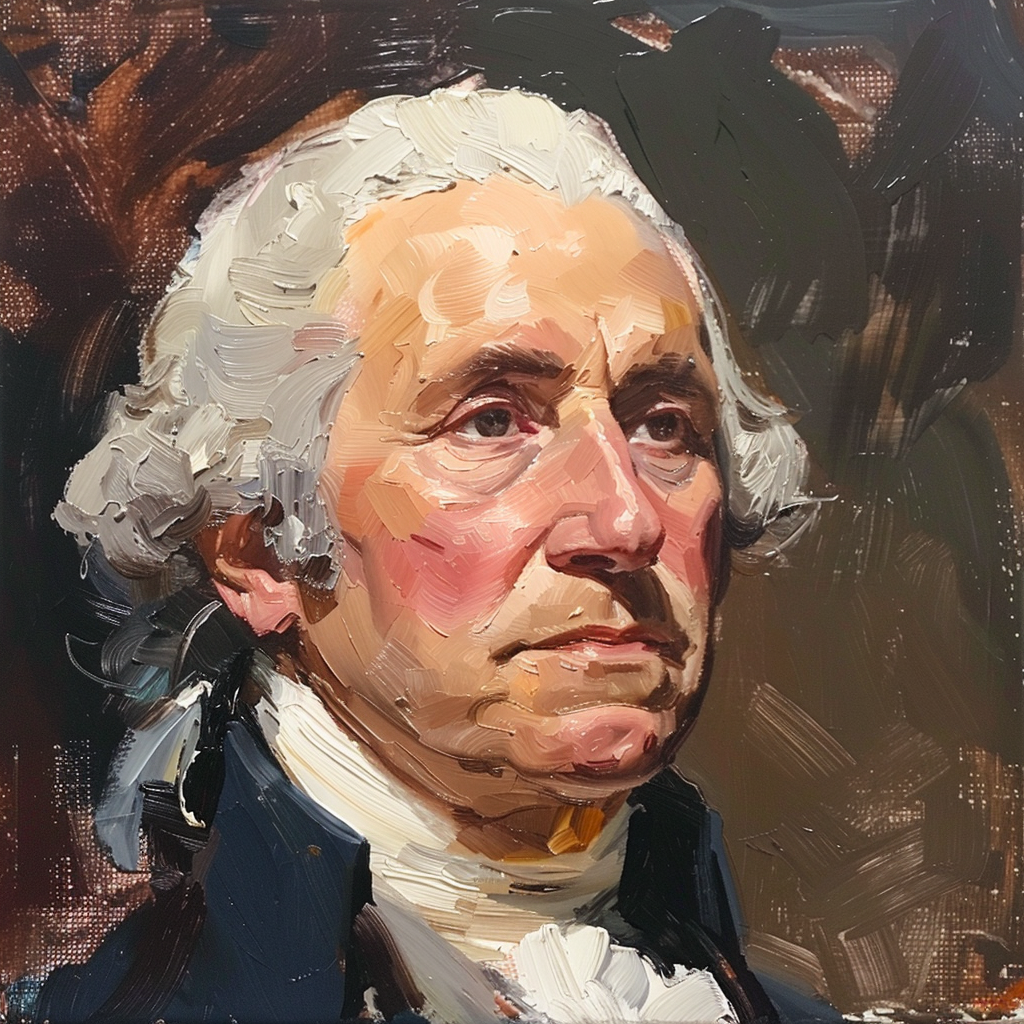The first president of the Union of American States.
The Presidency of George Washington (1789 – 1799)
The Founding of the Union of American States
1789: The First President of the Union
After successfully leading the colonial forces to victory against Grand Britain, George Washington was unanimously elected as the first President of the Union of American States in 1789. His presidency marked the foundational period of the Union, as the newly independent nation sought to establish itself on the world stage while balancing the competing interests of planter aristocrats, industrialists, and frontier settlers.
Unlike in the north, where the United States of New England was embracing a more centralized, mercantile economy, the Union remained a land of sprawling plantations, reliant on enslaved labor and controlled by an entrenched aristocracy. Washington, though personally uncomfortable with slavery, knew that abolition was politically impossible, as the powerful planter class had built the economy of the Union upon forced labor. He avoided direct confrontation on the issue, instead focusing his presidency on nation-building, military stabilization, and political unity.
1790-1793: Early Challenges & The National Government
During Washington’s presidency, the new government was fragile, plagued by factionalism between:
- The Federalists, who wanted a strong central government to maintain stability and ensure trade.
- The Planter Class, who sought to weaken federal authority to maintain their dominance over the enslaved labor economy.
- The Frontier Settlers, who were constantly pushing westward, demanding military support against native nations.
To balance these competing interests, Washington established the foundations of the federal government, including:
- The Executive Council, an advisory body to the President, composed mostly of influential landowners.
- The Judicial Circuit, a system of courts to settle disputes between states, though its authority was weak compared to the plantation elites.
- The Union Army, formalized to protect against both external threats and internal revolts, including slave uprisings and frontier conflicts.
Washington also oversaw the creation of Arlington House in Great Virginia as the permanent capital of the Union, chosen for its proximity to the wealthiest planters and its strategic position along major trade routes.
1793-1796: The Louisiana Dispute & Westward Expansion
During Washington’s second term, the Union’s aggressive expansionist policies led to increasing tensions with both Louisiana (then a territory under Spanish control) and indigenous nations across the southeastern territories.
- 1794: Washington supported armed expeditions into Florida and Georgia, escalating border conflicts with the Spanish.
- 1795: The Treaty of St. Augustine secured Florida from Spain in exchange for trade concessions, a move that bolstered the Union’s influence but angered anti-expansionists.
- 1796: Settlers and military leaders pushed westward into Creek and Cherokee lands, leading to skirmishes that Washington struggled to mediate.
Washington tried to maintain diplomatic relations but often deferred to state militias and private armies, which acted with near-total autonomy in frontier regions.
1797-1799: The Fractured Union & Washington’s Final Years
By the end of his presidency, Washington was exhausted by political infighting. The divide between Federalists and the planter aristocracy had widened, with many landowners openly defying federal authority.
Washington’s final major acts included:
- A failed attempt at gradual abolition: In a private proposal, he suggested a long-term transition away from slavery, but this was swiftly shut down by the ruling planter elite.
- Strengthening the military: He expanded the Union Army, both to defend against external threats and to prepare for the possibility of domestic unrest.
In 1799, George Washington declined to run for a third term, setting a precedent for peaceful transitions of power—though this tradition would later be shattered. He retired to his estate, where he died later that year.
Legacy of George Washington’s Presidency
- Established the executive and judicial framework of the Union.
- Maintained national stability but failed to resolve deep economic and political divisions.
- Expanded the Union’s territorial holdings, particularly in Florida.
- Failed to curb the power of the plantation aristocracy, which would later dominate the nation’s politics.
- Set a precedent for a two-term presidency (though later leaders would ignore this).
Washington’s presidency was seen as a golden age by nationalists, but a wasted opportunity by reformers, who believed he lacked the will to challenge the planter elites. His reluctance to confront slavery ensured that it would remain the central issue that would define—and ultimately destroy—democracy in the Union.

